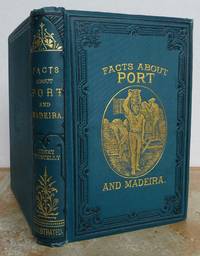
Television : Present Methods Of Picture Transmission
by Sheldon, H. [Harold] Horton, And Edgar Norman Grisewood
- Used
- Hardcover
- first
- Condition
- Very Good + Book/Near Fine DJ
- Seller
-
Pasadena, California, United States
Payment Methods Accepted
About This Item
Reviews
(Log in or Create an Account first!)
Details
- Bookseller
- Arroyo Seco Books
(US)
- Bookseller's Inventory #
- 020899
- Title
- Television : Present Methods Of Picture Transmission
- Author
- Sheldon, H. [Harold] Horton, And Edgar Norman Grisewood
- Illustrator
- Photographs and Diagrams Throughout
- Format/Binding
- Hardcover
- Book Condition
- Used - Very Good + Book
- Jacket Condition
- Near Fine DJ
- Quantity Available
- 1
- Edition
- 1st Edition 1st Printing
- Publisher
- D. Van Nostrand Company
- Place of Publication
- New York
- Date Published
- 1929
- Weight
- 0.00 lbs
- Keywords
- General
- Bookseller catalogs
- Rare And Unusual Books; Motion Pictures and Television; "Technology;
Terms of Sale
Arroyo Seco Books
Payment by credit card, check, PayPal or, for orders over $1000, by bank transfer. US Shipping by USPS media mail, at standard rate shown, but large or heavy items may require additional postage. Shipments valued over $200 may be sent with insurance, and/or with signature confirmation required. International shipments sent only by insured USPS mail (Priority Mail or Priority Express Mail or Express Guaranteed). Shipments to the UK may require additional shipping charges to provide insurance as they lack a nationally insured postal system. Sales within California and many other states are subject to sales tax. International shipments may be subject to Customs duties or fees and/or VAT which are the responsibility of the buyer. Postage will not be refunded for unaccepted packages; please review your order for correct addressing.
About the Seller
Arroyo Seco Books
About Arroyo Seco Books
Glossary
Some terminology that may be used in this description includes:
- Edges
- The collective of the top, fore and bottom edges of the text block of the book, being that part of the edges of the pages of a...
- Cloth
- "Cloth-bound" generally refers to a hardcover book with cloth covering the outside of the book covers. The cloth is stretched...
- Spine
- The outer portion of a book which covers the actual binding. The spine usually faces outward when a book is placed on a shelf....
- Fine
- A book in fine condition exhibits no flaws. A fine condition book closely approaches As New condition, but may lack the...
- Tight
- Used to mean that the binding of a book has not been overly loosened by frequent use.
- G
- Good describes the average used and worn book that has all pages or leaves present. Any defects must be noted. (as defined by AB...
Frequently asked questions
This Book’s Categories
Also Recommended
-

Save 10% on every purchase!
Join the Bibliophiles’ Club and start saving 10% on every book.
$29.95 / Year





